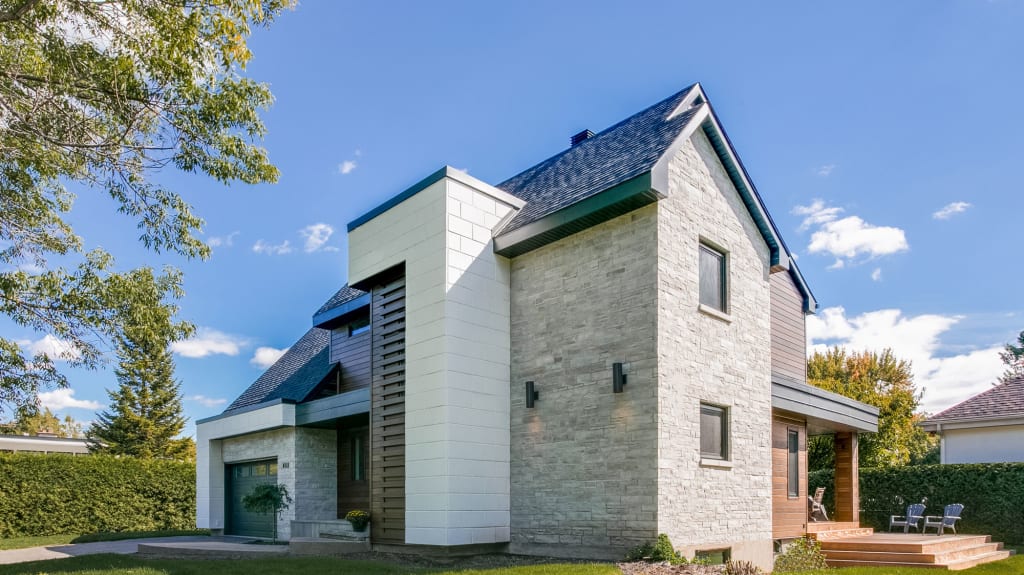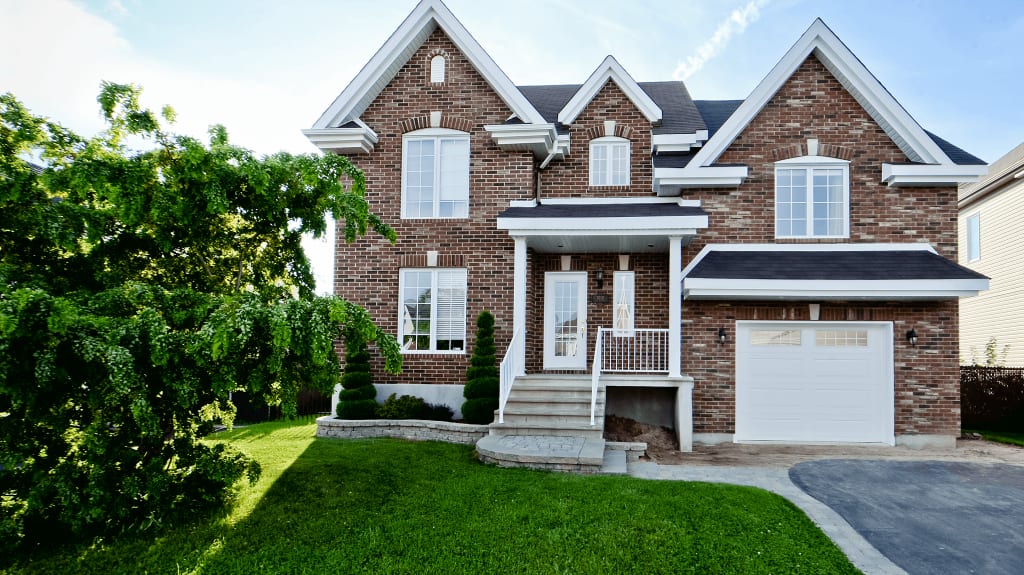With the climate change clock ticking, sustainability has become a driving force in consumer consciousness. Homeowners are now renovating their properties to be more eco-friendly, with many setting their sights on siding options. Of course, more research is needed. While some exterior cladding types break and warp easily, others have long lifespans that are destined for landfills after use. Thereʼs a lot to consider, so letʼs review several of the best sustainable siding options on the market.
Eco-friendly siding options
Not all exterior siding options are created equal. When you consider product lifespan, recyclability and the raw materials involved, some cladding types are a more sustainable choice for the planet than others.
Brick masonry
Although no exterior siding is 100% green, brick is an excellent eco-friendly choice. It's often made from clay, an abundant natural resource that doesn't contribute to pollution when extracted. While heating clay is a very energy intensive process, the resulting durability more than makes up for it. In fact, some studies have found that brick can last over 500 years!
Replacing this type of green siding usually has less to do with actual deterioration of the brick itself and more to do with the condition of the mortar or building structure. Also, it's now possible to clean and reuse brick instead of sending it to a landfill during renovation. Among other promising solutions, brick can be made from recycled plastic.
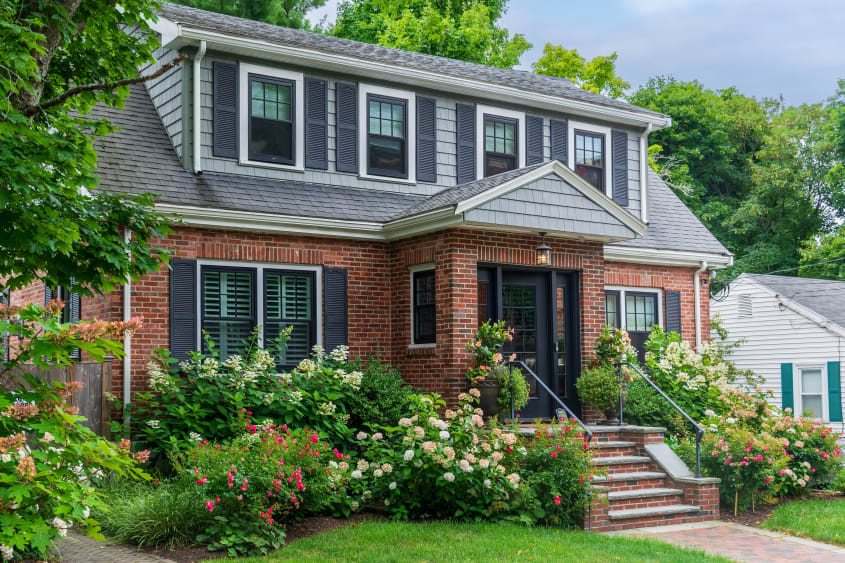
Stone masonry
Stone offers the same benefits as brick: it's weatherproof, fireproof, and resistant to mould and pests. It also needs little upkeep. This type of exterior siding is exceptionally durable and requires no chemical treatment. Plus, since it's a natural material, you'll reduce your ecological footprint even more if you buy local.
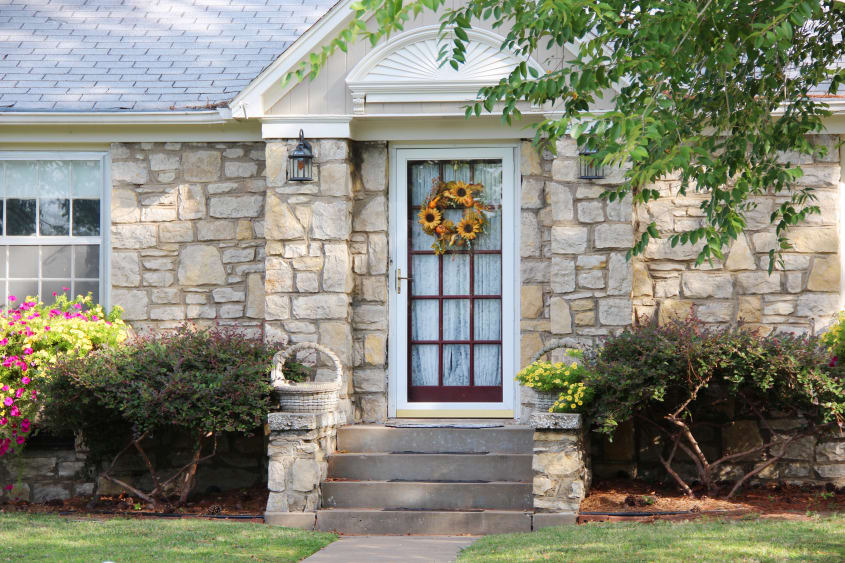
Aluminum siding
They say you can recycle aluminum to infinity and beyond, which gives this eco-friendly siding option an undeniable advantage. While a lot of energy is needed to extract bauxite ore and transform it into aluminum, it has a long lifespan – around 40 years! Aluminum siding is available in panels or boards and is easy to maintain.
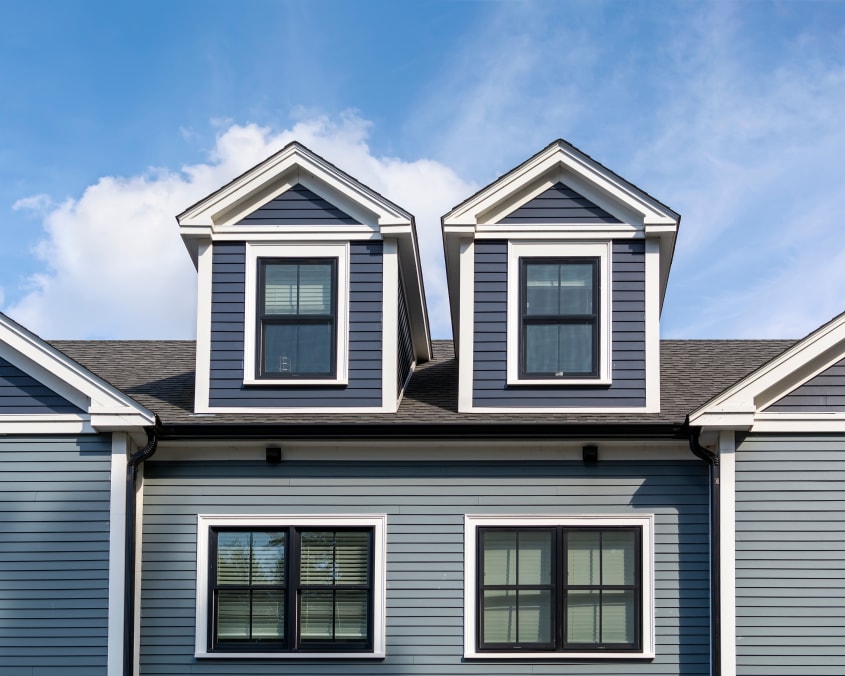
Stucco
Stucco is not just a sustainable choice – it’s also a timeless one. This eco-house siding offers several benefits including low maintenance requirements, weather resistance and durability. Available in an impressive selection of colours, you will have no trouble finding stucco siding that complements your home’s design. There are also several different finishes, ranging from smooth to sandy textures for you to choose from.
Additional benefits of this material include resistance to mould and rot, resistance to termite infestations and resistance to fire.
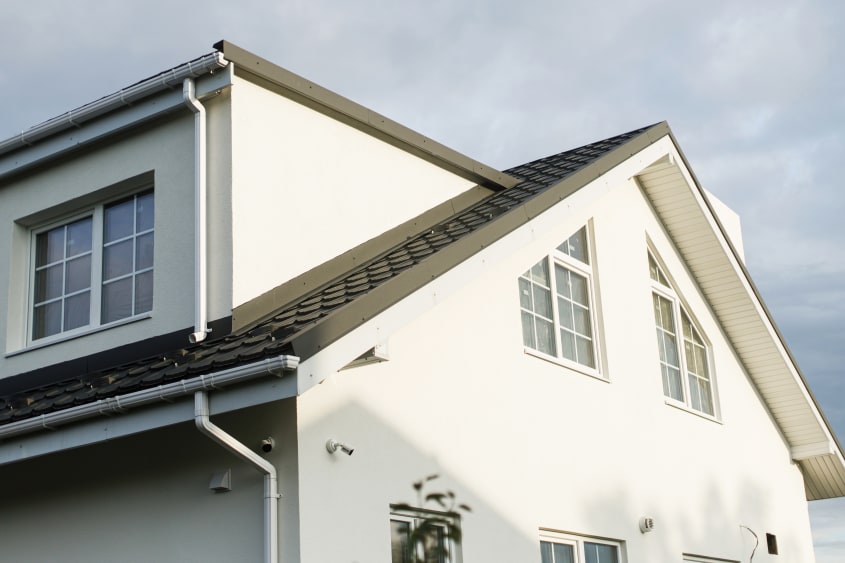
Exterior wood siding
This sustainable siding option is customizable – stain or paint it any colour you please! Wood has the downside of needing regular maintenance, but repairs are relatively easy and the effort you put in will extend the material's lifespan.
Wood also has several benefits: it's an abundant natural resource and can store carbon. Even the production and extraction process has a relatively low environmental impact, which becomes even more minimal if sourced locally. If you're curious about exterior wood siding, check out cedar, pine, spruce and larch wood – they're some of the most popular options!
If you want to go the extra mile, source your exterior wood siding from a company that employs sustainable forest management practices. Simply look for recognized certifications, such as Forest Stewardship Council, on your green quest.
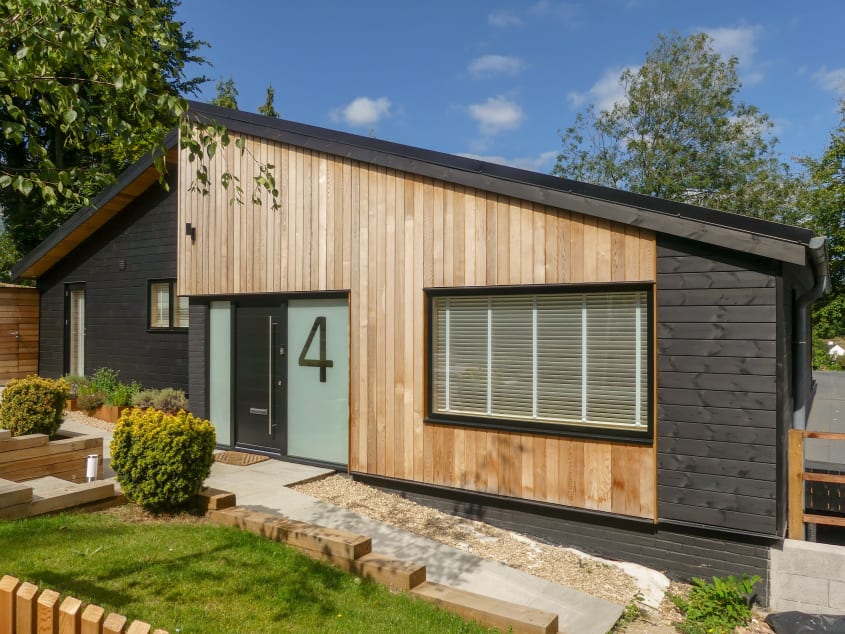
Recycled siding ideas
Engineered wood siding (wood fibre composite)
It's all well and good to have responsibly managed forests but it's even better when you don't have to cut down trees to begin with.
Despite its name, engineered wood siding doesn't actually contain any real wood, at least wood in its original state. This eco-friendly exterior siding option is in fact made from 95% recycled waste: wood fibre from sawmills and recycled thermoplastic. The remaining 5% comprises pigments and a mineral filler that binds components together.
That said, some manufacturers still use virgin plastic materials (instead of recycled plastic materials), which makes this a less eco-friendly siding choice. Find out all the facts before buying this type of exterior cladding.
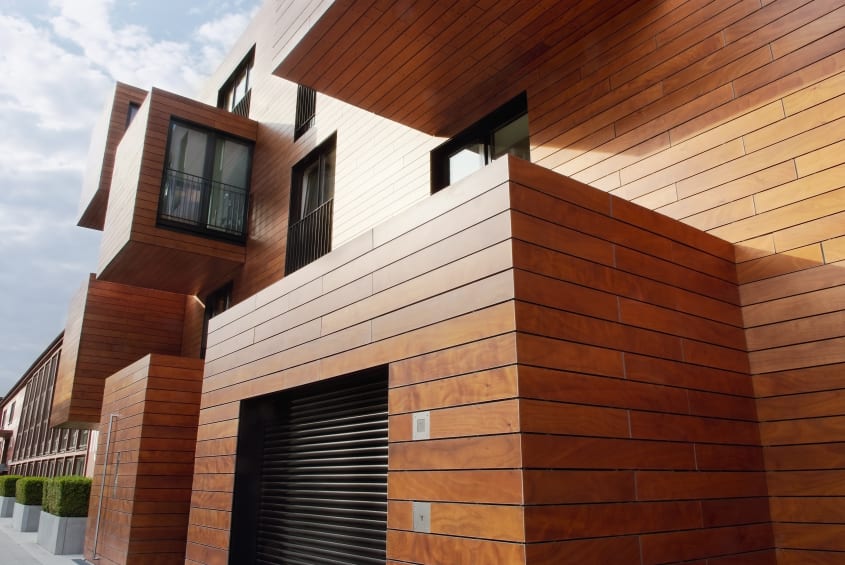
Recycled metal
Most metals are highly recyclable, making them an obvious choice for anyone concerned about their carbon footprint. Builders have been using metal siding such as aluminum and steel in homes since the 1940s. Today, these materials are still widely used and appreciated for their durability, fire resistance and cost-effectiveness.
You can find recycled metals in a decent variety of colours and styles–some with embossed coatings to give them an interesting texture.


Thinking of renovating?
Exterior siding options that are not as green
From questionable durability and the use of non-renewable resources to extremely polluting manufacturing methods, these exterior siding options are a hard pass!
Fibre cement siding
Similar to acrylic, fibre cement siding contains a lot of gray energy and its manufacturing process contributes to environmental pollution. And though it can last up to 40 years if bought from a reputable manufacturer and installed by an experienced professional, chances are it won't reach its full lifespan. In fact, there have been class action lawsuits against major American manufacturers due to numerous reports of cracking, discolouration, flaking and efflorescence. At best, it's a risky exterior siding option.
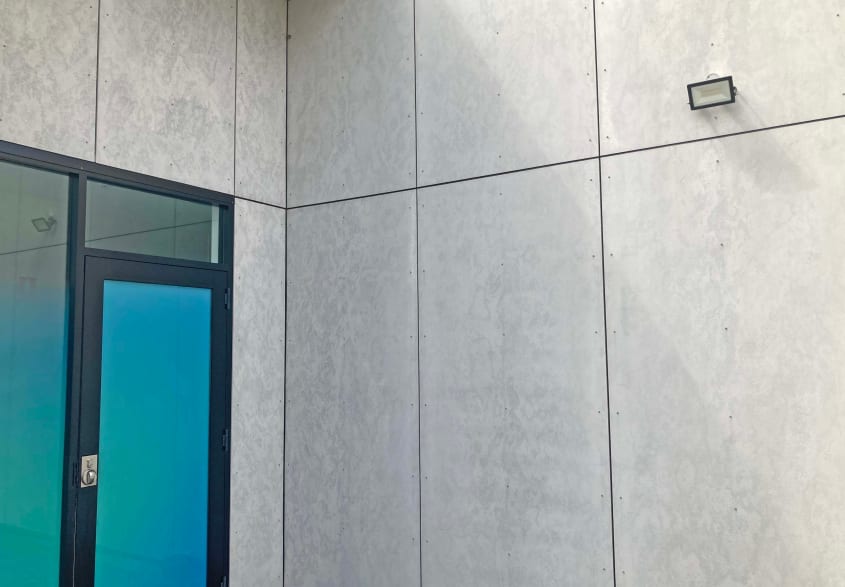
Vinyl siding (PVC)
Beware of those who claim that polyvinyl chloride (vinyl siding) is an eco-friendly product. Sure, it's light and requires little maintenance, but the advantages stop here. PVC is a synthetic material made of sodium chloride and petroleum, a non-renewable resource. With its low recycling rate, vinyl is among the worst choices an eco-conscious consumer can make.
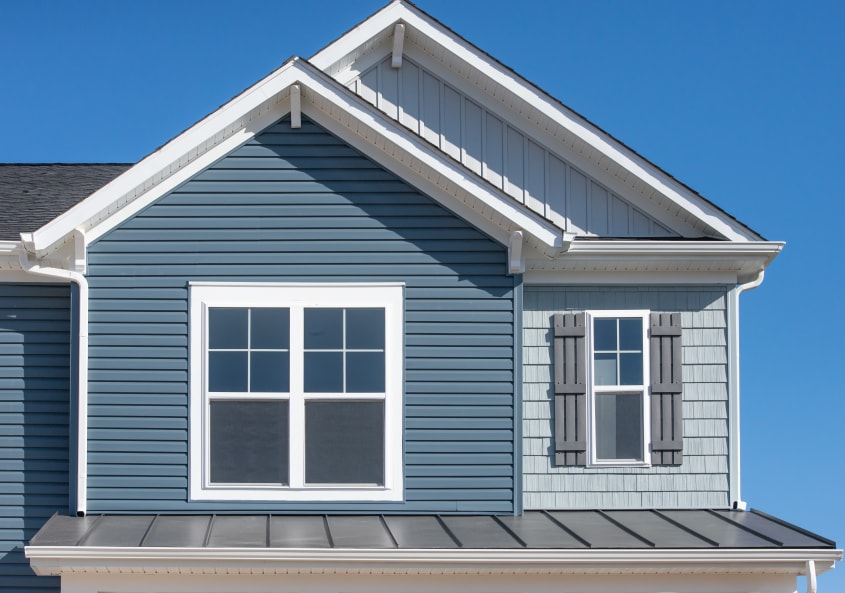
Finding the greenest siding material
If you're going back and forth between two house siding options, ask yourself the following questions to determine if it's really eco-friendly.
What is the exterior siding made of and is it a renewable resource?
Is the material extracted and manufactured locally or in a land far, far away?
Does the green siding option require a lot of energy to produce (e.g., bricks)?
Is the material harmful to the environment or to people?
Does the material have a recognized certification or logo (e.g., Forest Stewardship Council)?
Does it require a lot of maintenance?
What is its lifespan?
Is the material recyclable or biodegradable? Does it create residue when installed?
No exterior siding is 100% foolproof. That said, these factors should help you make a decision in line with your values and priorities.
The importance of proper insulation
If you're in the market for sustainable siding, take the opportunity to improve your home's insulation as well. It'll help cut down on heating and cooling costs, which in turn helps the environment. The best part? The federal government has a grant to help reduce the cost of eco-friendly renovations.
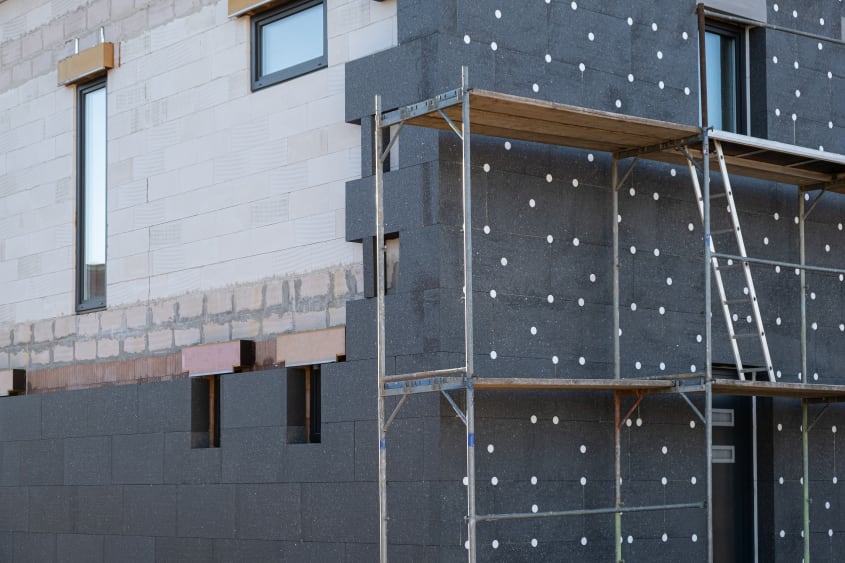
Green siding for a greener planet
Choosing recycled, reclaimed or other eco-friendly siding options for your home helps protect the planet for future generations. You'll also enjoy substantial savings – environmentally friendly siding is durable, meaning you won't have to replace it for a long time and it'll shelter your home from the elements.
Looking to add instant curb appeal to your home but don't know where to start? Explore more house siding options and these beautiful completed projects.
For even more inspiration, don’t forget to check out these incredible home siding trends as well.
Discover the latest home siding trendsNeed to replace your siding?
Old or damaged siding can be a major eyesore and detract from your home’s curb appeal. To keep your property looking its best, consider treating yourself to a little upgrade. When home renovation projects pop up, you can count on RenoAssistance to connect you with the right specialists to get the job done efficiently. Our expanding network includes over 2,400 Verified Contractors who you can trust to treat your home with the TLC it deserves. Ready to get started? Tell us more about your project or check out our past exterior siding projects today.
Find a contractor



